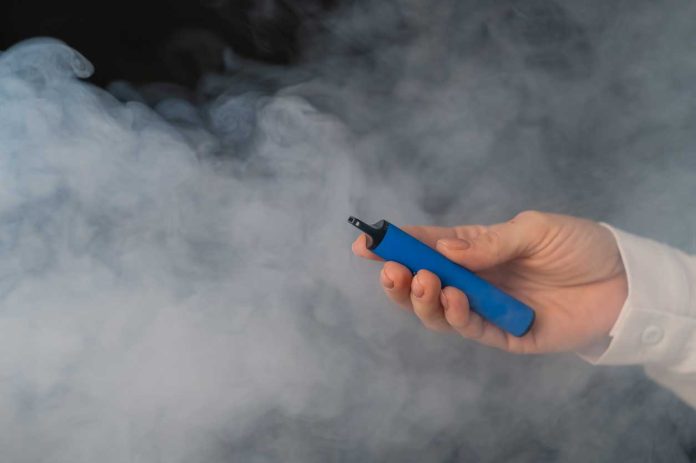The vaping industry is an extremely cutthroat one, and that’s true in every region of the world. In Europe, vape shops have to deal with competition that only gets stiffer as time goes by, and they also have to contend with consumer preferences that can change at the drop of a hat, rendering existing stocks obsolete seemingly overnight.
One thing that European vape shops have in their favour, though, is relatively permissive regulatory framework. You do have to stay on top of the Tobacco Products Directive – which isn’t set in stone and has continued to evolve over the years – but at least you don’t have to worry about the government regulating your entire industry out of existence. It’s safe to say that vaping in Europe is here to stay and isn’t going anywhere.
When you start to think that things are difficult for you as a European vape shop owner, here are a few surprising facts that might help to set your mind at ease. American vape shops like Vapor Chasers in Virginia Beach face some absolutely crazy challenges – and in this article, we’re going to describe just a few of them.
These are some of the shocking differences between European and American vape shops.
American Vape Shops Can’t Say What Vaping Is For
The tangled and confusing legal history of the American vaping industry began with the introduction of the first vaping devices into the United States in the late 2000s. In 2009, the U.S. Food and Drug Administration (FDA) began seizing shipments of e-cigarettes, stating that they were drug delivery devices requiring approval for therapeutic use before they could be marketed to the public.
The e-cigarette brand NJOY sued the FDA and eventually won in the District of Columbia Court of Appeals. The court’s decision stated that the products could remain on the market as long as long as the sellers made no claims of any therapeutic purpose such as smoking cessation. In that case, the FDA could regulate e-cigarettes but would have to regulate them as tobacco products.
The court decision allowed the American vaping industry to continue unabated for several years while the FDA constructed the framework for its vaping regulations. Due to that court decision, though, vaping products are legally considered tobacco products in the United States even though they contain no tobacco. Because of that, sellers can’t talk about the fact that vaping can help smokers quit even though that’s why people actually buy the products.
How do you market a product for quitting smoking without actually what the product is for? That’s one challenge European vape shop owners don’t have to worry about.
American Vape Shops That Sell Online Have Onerous Reporting Requirements
As part of the omnibus federal spending bill enacted in 2020 for the 2021 fiscal year, the United States Congress voted to subject vaping products in the United States to a regulation called the Prevent All Cigarette Trafficking (PACT) Act. That’s a major challenge for American vape shops that sell products online for two reasons.
- The United States Postal Service is now forbidden from delivering vaping products to consumers. The law doesn’t just apply to e-liquid with nicotine; it also applies to nicotine-free e-liquid and to all vaping hardware including replacement parts.
- Vape shops that sell vaping products online and ship them across state lines must collect detailed information about their sales and send that information to all relevant state, local and tribal taxation offices for tax collection purposes. This new reporting requirement is so burdensome that it’s now virtually impossible for any small vape shop in the United States to sell products online.
Shipping Companies Don’t Want to Work with American Vape Shops
Subjecting vaping products in the United States to the PACT Act didn’t just force online sellers to comply with onerous reporting requirements – it also made order fulfilment a logistical nightmare. Prior to 2021, American vape shops almost exclusively shipped products to consumers by mail. With that no longer an option, vape shops had to begin using independent shippers. The problem, however, is that FedEx, UPS and DHL all restrict shipments of vaping products and will not deliver them to consumers in the United States.
With no access to any major shipping carrier, American vape shops have had no choice but to work with independent courier services and to piece together an order fulfilment network that covers as much of the country as possible. The shipping costs are dramatically higher with independent couriers compared to shipping by mail, and packages often take much longer to arrive. In addition, there are many people who live in rural areas that aren’t serviced at all by these couriers. Thanks to the PACT Act and the vape mail ban, those people are essentially unable to buy vaping supplies online at all.
American Vape Shops Have an Adversarial Relationship with Regulators
The final issue that American vape shops face – and the biggest one of all – is the fact that almost none of the vaping products currently for sale in the U.S. have actually received marketing approval from the FDA, which means that any of those products could be ordered off of the market at any time.
The current status of the American vaping industry stems from the court decision cited near the beginning of this article. The court decided that the FDA needed to regulate vaping products as tobacco products, and that’s exactly what has happened.
However, the legal framework that governs the sale of tobacco products in the United States – the Family Smoking Prevention and Tobacco Control Act – states that no new tobacco products can enter the market unless they first receive marketing approval from the FDA. In order to receive approval, the makers of those products must demonstrate to the FDA’s satisfaction that the products are “appropriate for the protection of public health.” This requirement – also known as the Premarket Tobacco Application (PMTA) process – applies to all vaping products including every e-liquid, every device and all replacement parts such as coils.
The problem with demonstrating that a vaping product is appropriate for public health, however, is that no one is quite sure how to do it. Millions of PMTAs have been submitted to the FDA to date, and the vast majority have been denied. A few PMTAs are still pending, and some of the companies that have received denial orders now have lawsuits working their way through the legal system.
The FDA has not approved any bottled e-liquid, nor has the agency approved any vaping product in any flavour other than tobacco. Only a few small e-cigarettes from major tobacco companies have received approval. The rest remain on the market only because the FDA hasn’t ordered their removal yet.
To observers, the PMTA process for vaping products has begun to look like a de facto ban on all flavoured vaping products and an insurmountable roadblock for any manufacturer that isn’t backed by Big Tobacco. The businesses currently suing the FDA have stated that the process is unfairly rigged against them, and it’s possible that the litigation will eventually result in a new approval process that allows the American vaping industry to continue existing. Until then, though, American vape shop owners can only continue doing business as they have been and hope for the best.
Owning a Vape Shop in Europe Really Isn’t So Bad
Running a vape shop in Europe isn’t always easy, but the good news is that your main challenges all stem from your competition and not from regulatory threats that put the future of the entire industry in doubt. The next time the pressure of owning a vape shop starts to get to you, just look at the mess that the American vaping industry has become. Chances are that you’ll start to feel better almost immediately. You can check Vape Super Store while you’re at it.




































